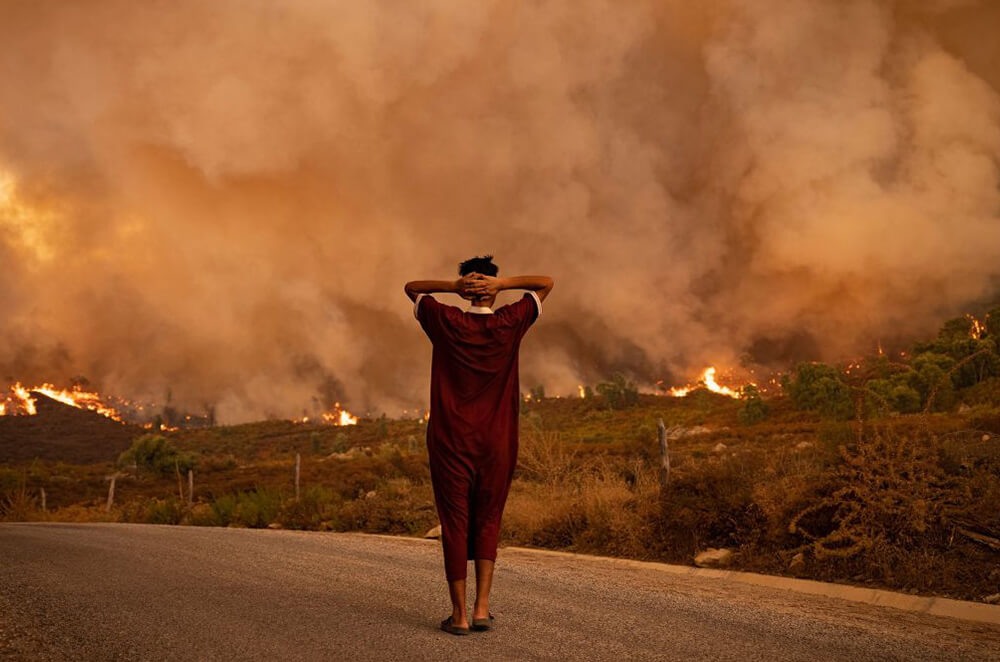
How Cities are Tackling The Heat Island Effect
Fecha: 16/08/2023
As global temperatures continue to rise, so do the number of heat-related illnesses and deaths. The threat is particularly worrying in cities, where temperatures are usually several degrees higher than in outlying areas.
This is called the ‘heat island effect’, and it happens where instead of natural cover (that is, trees), there’s a dense concentration of pavement, buildings, and other infrastructure that absorb and retain heat. This increases energy costs, air pollution levels, and heat-related illness and mortality.
Dozens of cities around the world are experiencing record temperatures this summer, and officials are seeing that cooling measures need to be put in place to protect citizens. Innovation, conscious urban planning and more greenery are some of the ways cities are combating heat waves:
Creating Shade
In Seville, Spain, where heat waves are named in much the same way as storms, shade is one of the key cooling methods. Since temperatures can drop a couple of degrees in the shade compared to sun-exposed areas, hundreds of awnings and trees have been steadily added to the city over the past few years to provide cover.
Abu Dhabi came to the same conclusion about the benefits of shade, and took their solution a step further. They’ve installed shade benches, misting devices and shades that roll back at night to let the hot air escape. The facade of one high-rise building is covered in screens that keep the building cool without blocking the light. The screens are fitted with sensors that respond to the sun’s movement, so they unfold when the sun hits them.
Cooling Colors
Another way to combat the heat island effect is by making the now heat-catching surfaces, like roads and buildings, more reflective. In Los Angeles, the ‘whitest paint on earth’ is being used to paint some streets in an effort to cool down the scorching city summers.
Where dark asphalt absorbs most of the sun’s rays, white streets reflect them. This makes the streets several degrees cooler than regular asphalt roads. It also helps keep surrounding buildings cooler, lowering the need for air conditioning, and ultimately reducing the effects of climate change.
New York City also implements this logic by providing free white coating for the roofs of certain buildings, as these reflect as much as 90% of sunlight and thus keep the inside of the buildings around 30% cooler.
Dutch Solutions
Following the reasoning that more asphalt roads mean hotter cities, the Dutch city of Arnhem is reevaluating their road system altogether. They are shrinking lanes in underused roads and repurposing those areas for tree planting.
Also in the Netherlands, Rotterdam has become an example of the benefits of green roofs. Studies show that green roofs can lower citywide ambient temperatures by 5 degrees Fahrenheit, reducing building energy use by up to 0.7%. In cities where it’s hard to find areas to plant new trees, green roofs provide a space for plants and biodiversity to thrive, and help keep cities cooler.
Why trees are the global answer
Pretty much every city combating heat waves, from Paris to Los Angeles, can agree that the most straightforward solution is to plant more trees.
Trees and green areas basically work as nature’s air conditioners, helping regulate the planet’s temperature. Trees can bring temperatures down by absorbing and storing CO2, providing shade, reflecting and scattering sunlight, and releasing water vapor into the air, which also cools the surrounding air.
That’s why no matter how else they are tackling the heat problem, most cities around the world are making space for more trees.
